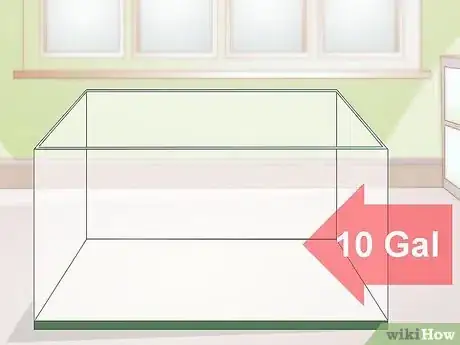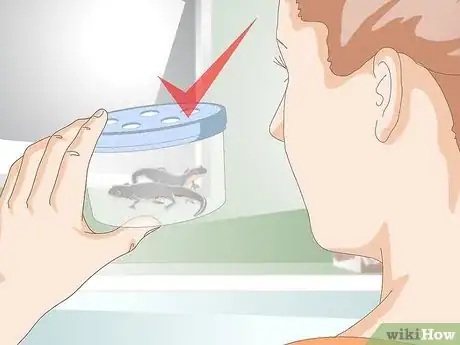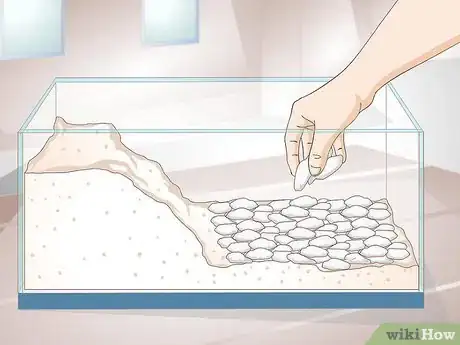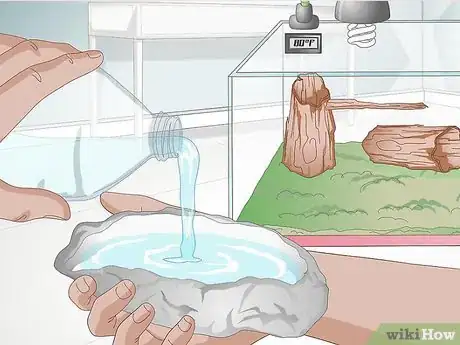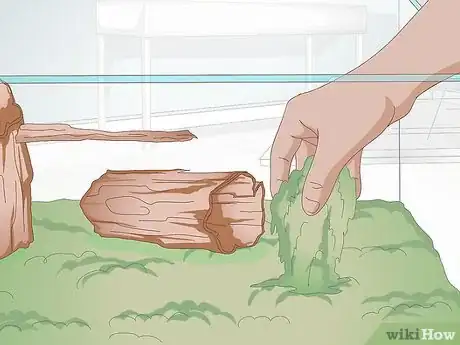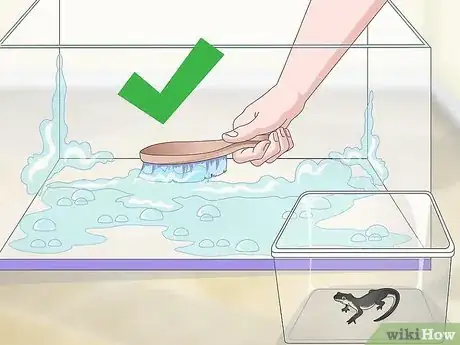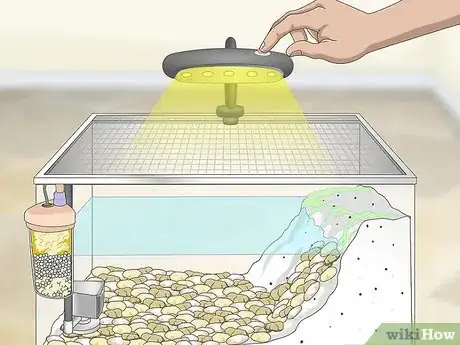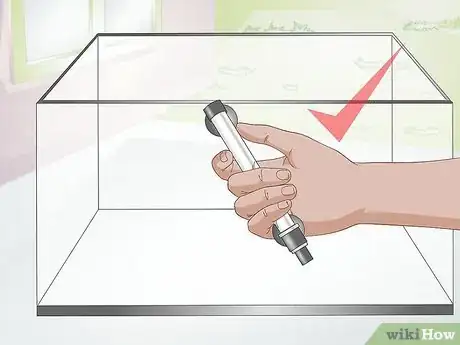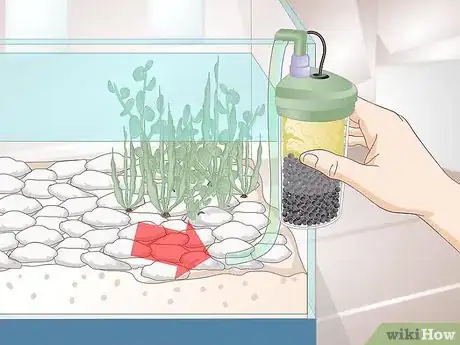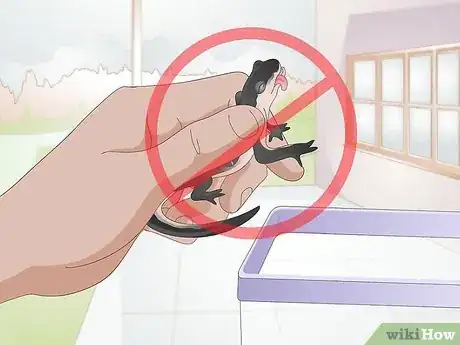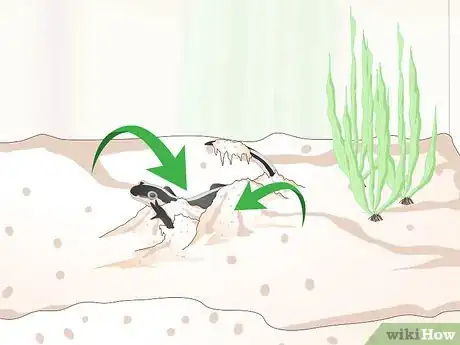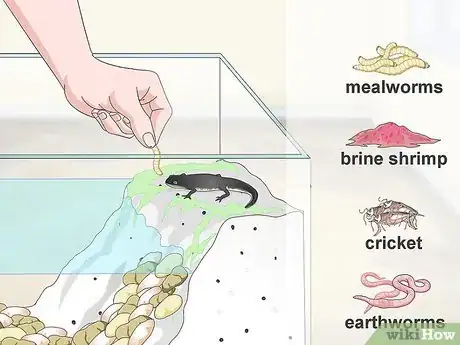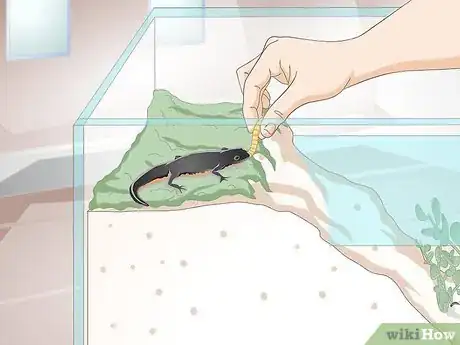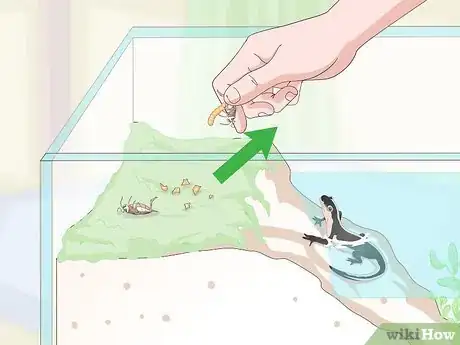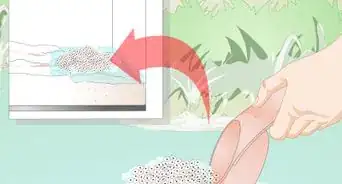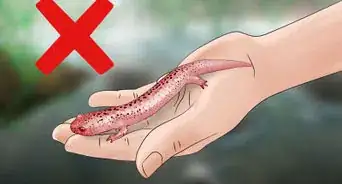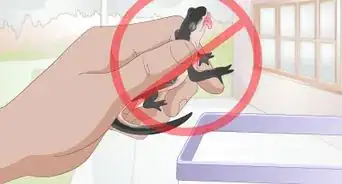wikiHow is a “wiki,” similar to Wikipedia, which means that many of our articles are co-written by multiple authors. To create this article, 82 people, some anonymous, worked to edit and improve it over time.
wikiHow marks an article as reader-approved once it receives enough positive feedback. This article received 27 testimonials and 94% of readers who voted found it helpful, earning it our reader-approved status.
This article has been viewed 469,331 times.
Learn more...
One fact of life is that salamanders have cute faces. Another fact is that they are relatively easy to take care of--provided that you know how to do so correctly. wikiHow is here to help with the latter (because salamanders don't need any help being cute or cool looking). Scroll down to Step 1 to learn the best ways to care for your salamander. (Note: if you are looking for information on how to care for a newt, click here.)
Steps
Housing Your Salamander
-
1Use an aquarium or tank to house your salamander. Aquariums or reptile tanks are the best way to house your dear sal. You should use a 10 gallon (37.9 L) tank, as this will provide enough room for your sal to hide, dig, and doze his days away. Aquariums tanks are best used for aquatic and semi-aquatic salamanders. Make sure you clean your tank before you create your salamander’s home.
- You can also use plastic or acrylic tanks if you do not want to purchase a glass tank.
-
2Make sure you have a tight-fitting lid. Salamanders are excellent climbers--they will make quick work of the sides of 10 gallon (37.9 L) tank. Because of this, it is important to have a lid that fits tightly on your tank so that your salamander cannot escape. Screen lids are best, as they provide your salamander with excellent ventilation.
- If you cannot purchase a screen top, a hood top will also work.
Advertisement -
3Determine if your sal needs an aquatic, semi-aquatic, or terrestrial home. This will depend on the type of salamander you have or are going to purchase. If you are not sure what your salamander prefers, ask your pet shop or run an online search.
- Aquatic salamanders, like the Axolotl, spend their whole lives in the water.
- Semi-aquatic salamanders should have a tank that is half water, half land.
- Terrestrial salamanders should not have a water area in their tank.
-
4Setup your tank. Again this will depend on the kind of salamander you have. Remember, the substeps listed here are just rough guidelines--you can be as creative as you like with your tanks.[1]
- Aquatic tank: You should use an aquarium to house your sal in. Layer the bottom of the tank with two inches of washed aquarium gravel. Gradually slope the tank so that the layered gravel goes from two inches to three inches deep. Plant some aquatic plants but know that you will have to replace them every so often because salamanders can be rough on aquatic plants.
- Semi-aquatic tank: Divide your tank with a half sheet of plexiglass so that one side is aquatic, and one side is terrestrial. Lay two inches of aquarium gravel on the aquatic side, along with some aquatic plants. Create a sloping gradient with the gravel so that the salamander can walk from the water to the land. On the land side, place two inches of aquarium gravel, then top it with substrate (ground covering). This substrate should be mulch-like soil like shredded bark or coconut fiber. Top this with sterile potting soil or garden loam.
- Terrestrial tank: Do the same as the land side of the semi-aquatic tank, only throughout the whole tank. Add plants, moss and a log
-
5Provide your terrestrial salamander with a water bowl. You will want to keep this dish relatively small and shallow, as terrestrial salamanders tend to not be very good swimmers, and some could even drown in a deep water bowl.
-
6Add some hiding places. No matter what type of salamander you have, you should provide them with some good hiding places. Salamanders can get pretty stressed out, so it is good for them to have some locations to relax in. Rock caves, large shards of pottery, large pieces of bark, and store-bought ‘hiding spots’ will make your sal very happy.
-
7Clean the cage weekly. Take out the sal in gloved hands and put him in a secure place while you're cleaning so you don't hurt your sal. Then scrub the tank and furnishings with hot water and dry before putting your sal back in.
Lighting and Heating
-
1Use a broad-spectrum light for your sal. Do not put your salamander’s tank in direct sunlight, as the sunlight can heat the tank up too much. Use an appliance timer to switch the light on and off according to the natural light found in your salamander’s native environment. This means making the ‘days’ and ‘nights’ longer or shorter based on what season you are in so your sal can live like it would out in the wild.[2]
-
2Give your sal the temperature they want. The temperature you set up will depend on the type of sal you have. Salamanders from temperate climates, like the tiger salamander, will not need any form of heating. Sals from tropical and semi-tropical locales will need heat. Ask your pet store or run an internet search on what temperatures your sal should be exposed to. Always provide a temperature gradient--one side of the tank should be warmer than the other side. To give them the heat they like use one of the following[3] :
- Aquarium water heater: These are submersible heaters that will warm the temperature of the water and increase the humidity in the tank.
- Heating pad: This can be placed under one side of the tank.
- Heat lamp: You should monitor these because they may kill the plants in your tank. You will also have to regulate how hot the heat lamp makes the tank.
Health and Handling
-
1Provide your salamander with filtered water. You will have to regularly filter your salamander’s water. You can purchase a recirculating water filter, or set up your filter in some other way.[4]
- Give your terrestrial salamanders filtered water. You can give them tap water that has been treated to remove chlorine and chloramine. You can also use bottled spring water.
-
2Do not handle your salamander. Despite the fact that their cute little faces might inspire you to want to pick them up, you should try to avoid handling your salamander. The oils on human hands can actually make salamanders sick. In turn, salamanders can also carry or make secretions that can make people sick. So, it is best for everyone involved if you simply watch your sal, rather than handle them.[5]
- If you do have to handle a sal, like when picking one out or if yours is injured, wash your hands with very hot, soapy water. Take care to rinse off all of the soap.
-
3Allow your salamander to hibernate. Sals from cooler climates bury themselves underground for the winter months. While it may be a bummer to have an ‘empty’ tank sitting around, if salamanders don’t hibernate, they generally die at a younger age.[6]
Feeding Your Salamander
-
1Know that salamanders are nocturnal. Because of this fact, it is best to feed salamanders at night, when they are most active. Set an alarm for yourself when you first bring your salamander home, or else you might forget to feed him at night.
-
2Feed your salamander two to three times a week. Keep in mind that your salamander might not eat during the first few days that he is in his new home. Salamanders get nervously easily and when they are introduced to a new environment, they tend to take a few days to adjust to his new surroundings. Other salamanders, however, will cozy right up to their new home and will eat heartily on day one.
- If you bought a juvenile salamander, you should feed them daily until they stop growing and mature into an adult.
-
3Provide your salamander with a well-balanced meal. Salamanders are carnivores--they like to hunt their prey. Because of this preference, you will need to feed your salamander live prey. If you have to purchase dead prey, frozen prey is better than dry prey. Salamanders love[7] :
- Live earthworms, nightcrawlers (from a bait shop), bloodworms and crickets (which can be purchased at pet stores), live waxworms, live slugs, live white worms and tubifex worms.They will also eat frozen bloodworms, though you may have to move the bloodworm around to catch your salamanders attention.
- Give your aquatic salamanders brine shrimp. You can also feed them Daphnia and water fleas.
-
4Monitor the amount your salamander eats. In general, salamanders will simply stop eating when they are full. The amount you feed your salamander really depends on him. During the first couple of days that you feed it, provide him with a set amount of prey (you choose the number) and then check back on them in the next couple of hours. If there are any worms or crickets left, you will know that your salamander doesn’t need that much food.[8]
- Note that fire salamanders and tiger salamanders can become obese if overfed.
-
5Remove uneaten food from your salamander's home. If your salamander has not eaten all of their food in the couple of hours after you feed them, it means that they are full. Remove the live prey that is still in his home--if you do not, the live prey could try to bite or irritate your salamander.
- If you have an aquatic species of salamander, always remember to clean out uneaten food from his water or else you run the risk of dirtying the water or causing mold to grow.
Community Q&A
-
QuestionWhat could be wrong with my salamander, his belly appears to be bloated?
 Community AnswerChances are he ate something that upset his stomach. Go to a reptile vet and get it checked out.
Community AnswerChances are he ate something that upset his stomach. Go to a reptile vet and get it checked out. -
QuestionIf I find a salamander on land, can I make his tank materials with the stuff I found him in?
 Community AnswerYes. That will works and it should live for years.
Community AnswerYes. That will works and it should live for years. -
QuestionAre there any legal requirements or licenses that I need to own a salamander?
 Community AnswerIt depends. Endangered salamanders, such as green salamanders, are illegal to keep without a permit, but duskey salamanders probably aren't. Check your state regulations for information.
Community AnswerIt depends. Endangered salamanders, such as green salamanders, are illegal to keep without a permit, but duskey salamanders probably aren't. Check your state regulations for information.
Warnings
- If you keep your tank outside, be sure it does not get direct sunlight.⧼thumbs_response⧽
- Our skin is toxic to salamanders. Do not hold them.⧼thumbs_response⧽
References
- ↑ http://www.anapsid.org/sallies.html
- ↑ http://www.caudata.org/cc/faq/FAQhou.shtml
- ↑ http://www.anapsid.org/sallies.html
- ↑ http://www.caudata.org/cc/faq/FAQwat.shtml
- ↑ http://www.caudata.org/cc/faq/FAQcar.shtml
- ↑ http://www.anapsid.org/sallies.html
- ↑ http://www.caudata.org/cc/faq/FAQcar.shtml
- ↑ http://www.caudata.org/cc/faq/FAQcar.shtml
About This Article
To care for salamanders, feed them live worms, crickets, and slugs 2-3 times a week. You also need to provide filtered water for salamanders to swim in, along with some hiding places in case they get scared or need to relax. Depending on the species of salamander, they might need a heating pad or lamp to keep their tank warm enough. Also, try to avoid handling salamanders since the oils on your hands could make them sick. If you want to learn about how to prepare for a salamander's hibernation, keep reading the article!
